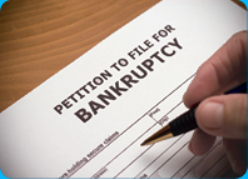 Chapter 7 bankruptcy is a legal process used by debtors to discharge debt. When a debt is discharged the debtor is no longer liable for repayment of the debt. The creditor whose claim is discharged is permanently barred from collecting from that debtor. But they may still be able to collect from other parties liable for the debt who are not protected by the discharge order. Some debts cannot be discharged. The main categories of nondischargeable debts include student loans, child support, criminal fines, and income taxes. However, some debtors who meet very specific requirements may be able to discharge student loans and income taxes.
Chapter 7 bankruptcy is a legal process used by debtors to discharge debt. When a debt is discharged the debtor is no longer liable for repayment of the debt. The creditor whose claim is discharged is permanently barred from collecting from that debtor. But they may still be able to collect from other parties liable for the debt who are not protected by the discharge order. Some debts cannot be discharged. The main categories of nondischargeable debts include student loans, child support, criminal fines, and income taxes. However, some debtors who meet very specific requirements may be able to discharge student loans and income taxes.
Chapter 7 bankruptcy begins with the filing of the petition, schedules, statements, and other documents. Debtors file a list of their assets and protect those assets using exemptions. If they own property that cannot be protected by the exemptions available then this property becomes part of the bankruptcy estate. The Chapter 7 trustee may take these assets, liquidate them, and then pay the proceeds to the creditors listed in the bankruptcy schedules.
Most debtors never make an appearance in court in a Chapter 7 case. Debtors meet with a trustee one time. This meeting is called a 341 meeting of creditors. During this meeting the trustee asks the debtor questions about their financial situation and the documents filed in the case. The trustee reviews the case and determines whether there is any money available for the creditors in the case. After the meeting of creditors the debtor waits sixty days to give the creditors a chance to review the bankruptcy documents. At the end of the sixty days the trustee asks a bankruptcy judge for an order discharging the debtor from bankruptcy. Once this order is signed the case is closed. The order also eliminates the debtor’s liability for dischargeable debts listed in the case.